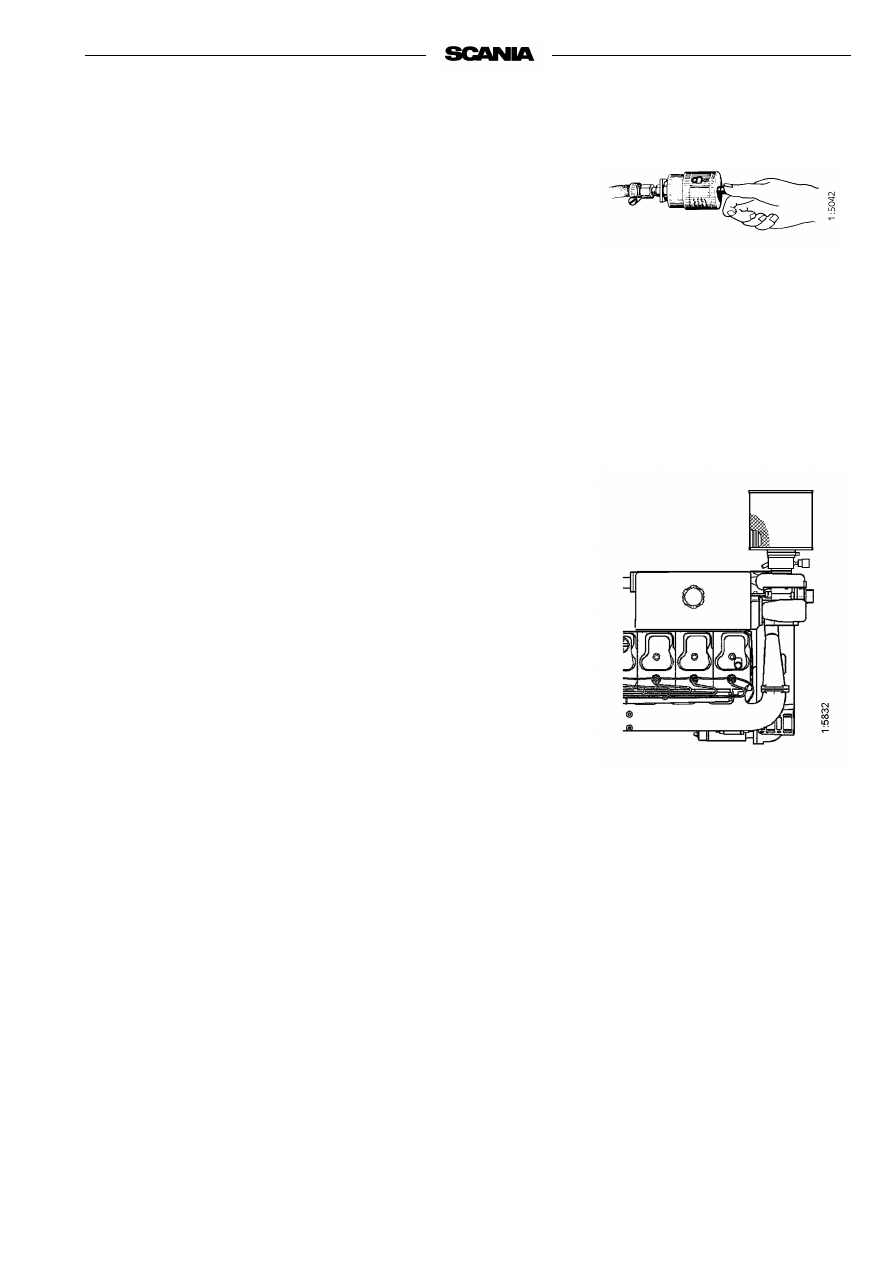Scania D9, DI9. Marine engine. Operator’s manual - part 3

Checking
- Insert a flashlamp into the insert and check from the outside that there
are no holes or cracks in the filter paper.
- Change the filter insert if there is any damage at all. Danger of engine
damage.
Assembly
1.
Assemble the air cleaner in reverse order.
2.
Reset the red plunger in the vacuum indicator by depressing the button.
Filter with a non-changeable element
(unit cleaner)
Cleaning
- The filter may be cleaned a maximum of 3 times. Mark the filter after
each time it has been cleaned.
- Use a cleaning solution consisting of water mixed with approx. 1% mild
detergent.
1.
Pour the cleaning solution into the element outlet at the same time as
turning the element so that the cleaning solution pours through the
element against the direction of the air flow.
2.
Leave the element in the cleaning solution for 5 minutes and then take it
out so that all the cleaning solution drains away.
3.
Rinse the element with ca 30 litres clean water at 30 - 40 °C. Pour the
rinsing water into the element in the same way as the cleaning solution.
4.
Take out the element and allow the rinsing water to drain off.
5.
Repeat the procedure until the rinsing water is clean.
6.
Leave the element to dry in a warm place for a few days
.
Note
The element must not be dried with compressed air
.